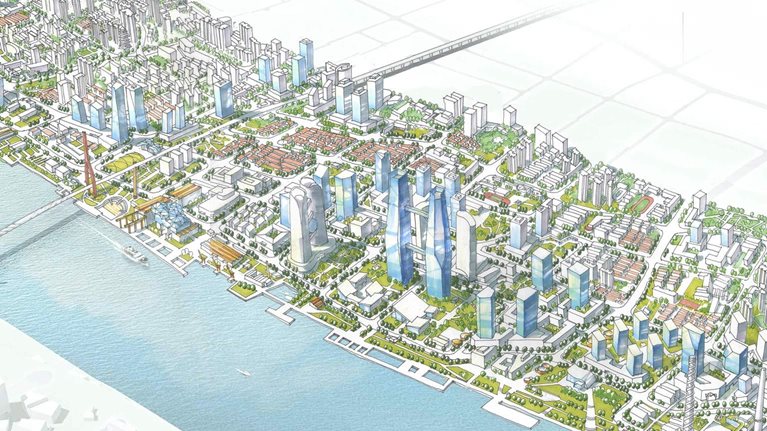Citizens have always been the cornerstone of public policy but, as population growth slows in Latin America and around the world, they are becoming an even more precious resource—for their work, their spending power, and their contributions to society. For the region’s cities where 80 percent of citizens now live, every erg of managerial power needs to be on the smart management of cities.
Stay current on your favorite topics
The economic benefits of smart city management are increasingly clear. Worldwide, McKinsey estimates that smart cities have potential to create as much as $1.6 trillion of additional value, including considerable benefits to consumers, by 2025. In Brazilian cities, smart city transportation could create up to $14 billion of value during this period.
Seizing the value of smart cities will require factoring citizens’ experiences and needs into the equation right from the outset.
People matter for growth
Slowing population growth threatens the trajectory of growth across Latin America. An expanding population has driven almost 80 percent of GDP growth over the past 15 years. From 2000 to 2015, employment grew at a compound annual rate of 2.3 percent, but between 2015 and 2030, that rate is expected to drop to less than half to only 1.1 percent a year.
This radically changes the equation for the managers of cities that are the lifeblood of Latin American economies: the region’s 198 large cities—defined as having populations of 200,000 or more—are set to generate 65 percent of GDP growth in the period to 2025.
Cities will increasingly need to compete to attract the people they need to thrive. Migration from rural to urban areas is slowing, but city-to-city migration continues. The modern digital era gives citizens the power of choice about where they live. In the past, they used to follow job opportunities; now those job opportunities can come to them. Manufacturing jobs tied to a factory location now account for less than one in ten jobs across developed regions; many retail and service-sector jobs, the largest and fastest-growing job categories, tend to follow people. A rising number of digital jobs can be performed at a distance, and older knowledge workers may choose more flexible work arrangements in their jobs as they approach retirement. Digital platforms enable people to be matched to jobs wherever they are.
Those cities that retain the citizens they have and attract newcomers will thrive; those that fail to keep their citizens and make themselves appealing to new workers and families will not. In the past, cities’ economic strategy hinged on appealing to businesses; increasingly it needs to focus on what they offer to citizens and the skills they bring. If they do, businesses will come.
Would you like to learn more about our Capital Projects & Infrastructure Practice?
There is much for city managers to do to compete successfully for these increasingly empowered citizens, not least in creating stable, formal employment, which requires mayors to broaden their focus from land planning to genuine economic development. In many respects, however, Latin America’s large cities today are failing them. There is too little housing, badly designed and insufficient infrastructure, widespread fears for public safety, and inadequate public services including education systems. The result is miles of slum dwellings, gridlocked roads, and deepening citizen dissatisfaction. Even throwing money at the problem is not necessarily solving deep-rooted problems. In Brazil, federal public spending has risen by 156 percent between 2007 and 2015, but the satisfaction of the population with public services—education, urban mobility, transport infrastructure, and health care—has trended steadily downward (Exhibits 1 and 2).

It may, of course, be that people’s expectations are rising beyond what governments are able to deliver within budget constraints. But it may also reflect the fact that urban management today is not set up to focus first and foremost on citizens. If it was, money might be invested more wisely and results would improve.
Realizing the “smart city” vision
The considerable rewards of smart cities will only be realized if they put citizens front and center of strategy—and that means understanding them: who they are, how they spend their days, and how they interact with city services—and then design policies accordingly. Citizen-centric governance is, in many ways, no different from the way that corporations focus on user experience when delivering their services. A working mother of three who lives in a residential neighborhood will have very different needs to the 72 year old widow who lives in a retirement home. They will interact with city services very differently.

The more detailed the understanding of citizens the better for practical policy. Different citizen journeys involve multiple touchpoints associated with different public services. Do they commute via public transport or do they walk? How much cost and time do they spend? How many times does a citizen visit the health center or hospital, and for what reason? What jobs do people do, and are they formal or informal? Such a data goldmine can inform targeted and effective public-services provision.
It was this promise of data-driven smart growth that lay behind the development of City Voices, a tool developed by McKinsey that captures and analyzes citizens’ sentiment across key aspects of city life to help leaders understand what matters most to their constituents. It gathers feedback, at a very local level, across a variety of demographic groups as they experience some 30-plus interactions with their cities—for example, a neighborhood bus service.

Global Infrastructure Initiative
Convening global leaders in infrastructure and capital projects in pursuit of new solutions
The idea for City Voices arose during a series of McKinsey urban-planning projects in Brazil. Social media technologies and analytics were gaining ground at the time, and we used a simple platform to ask citizens about their daily hopes and frustrations while gathering their votes on different city planning ideas. That input proved invaluable for the projects and McKinsey looked for ways to develop the platform into a solution that could be put to broader use. McKinsey conducted a thorough study of different citizens and journeys, identified a list of more than 150 different metrics, and then whittled them down to a key 30, which were then subjected to sentiment analysis algorithms to arrive at the insights that could underpin public policy. In 2016, the solution that became City Voices won McKinsey’s New Ventures Competition, and it is now being used to inform our work in many cities in the region and around the world.
Today, City Voices reveals that Latin America’s cities are underperforming on all citizen journeys examined thus far, particularly on transport and safety (Exhibit 3).

However, many Latin American cities are responding to the imperative to embrace smart urban growth centered on citizens. In Brazil, efforts are underway to build its first new smart city from scratch. The planned city will cover 330 hectares and be home to 21,000 inhabitants. The focus is entirely on the needs of citizens from good quality housing for those on low incomes to local IT systems, schools, libraries, transportation systems, hospitals, power plants, water-supply networks, waste management, law enforcement, and other community services. Colombia has invested more than $100 million in smart city initiatives and is moving toward open digital cities. Medellín, for instance, now has an Internet of Things-based system to reduce traffic, accidents, and improve emergency response times. In Argentina, Buenos Aires’ Smart Lab is a cross-government entity that works with citizens to co-create ways to improve living standards.
Identifying issues is, of course, only a starting point: solving them through well-worked policies and putting those policies into action on the ground are where the real work lies. But the verdict is clear—bold policy anchored to deep knowledge of citizens and their needs is the way to create many more smart city success stories.


